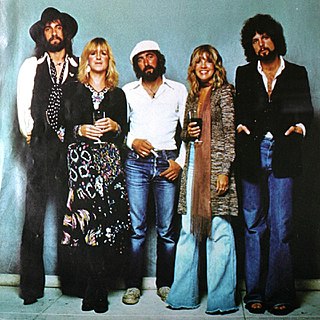Music radio is a radio format in which music is the main broadcast content. After television replaced old time radio's dramatic content, music formats became dominant in many countries. Radio drama and comedy continue, often on public radio.

Classic rock is a radio format that developed from the album-oriented rock (AOR) format in the early 1980s. In the United States, it comprises rock music ranging generally from the mid-1960s through the mid-1990s, primarily focusing on commercially successful blues rock and hard rock popularized in the 1970s AOR format. The radio format became increasingly popular with the baby boomer demographic by the end of the 1990s.
Oldies is a term for musical genres such as pop music, rock and roll, doo-wop, surf music from the second half of the 20th century, specifically from around the mid-1950s to the 1980s, as well as for a radio format playing this music.
Modern rock is an umbrella term used to describe rock music that is found on college and commercial rock radio stations. Some radio stations use this term to distinguish themselves from classic rock, which is based in 1960s–1980s rock music.
Contemporary hit radio is a radio format that is common in many countries that focuses on playing current and recurrent popular music as determined by the Top 40 music charts. There are several subcategories, dominantly focusing on rock, pop, or urban music. Used alone, CHR most often refers to the CHR-pop format. The term contemporary hit radio was coined in the early 1980s by Radio & Records magazine to designate Top 40 stations which continued to play hits from all musical genres as pop music splintered into Adult contemporary, Urban contemporary, Contemporary Christian and other formats.
Classic hits is a radio format which generally includes songs from the top 40 music charts from the late 1960s to the early 2000s, with music from the 1980s serving as the core of the format. Music that was popularized by MTV in the early 1980s and the nostalgia behind it is a major driver to the format. It is considered the successor to the oldies format, a collection of top 40 songs from the late 1950s through the late 1970s that was once extremely popular in the United States and Canada. The term is sometimes incorrectly used as a synonym for the adult hits format, which uses a slightly newer music library stretching from all decades to the present with a major focus on 1990s and 2000s pop, rock and alternative songs. In addition, adult hits stations tend to have larger playlists, playing a given song only a few times per week, compared to the tighter libraries on classic hits stations. For example, KRTH, a classic hits station in Los Angeles, and KSPF, a classic hits station in Dallas, both play power songs up to 30 times a week or more, which is another differentiator compared to other formats that share songs with classic hits libraries.
Dick Bartley's Classic Hits was a syndicated weekly, four-hour, classic hits program written, produced and hosted by Radio Hall-of-Fame broadcaster Dick Bartley. It was syndicated across the country by United Stations Radio Networks and internationally via Radio Express.

WDVD is a hot adult contemporary radio station in Detroit, Michigan. Owned and operated by Cumulus Media, WDVD's studios and offices are located in the Fisher Building in Detroit's New Center district near downtown, while its transmitter is located in Oakland County in Royal Oak Township at 8 Mile Road and Wyoming Avenue.

WOGL is a commercial radio station licensed to serve Philadelphia, Pennsylvania. The station is owned by Audacy, Inc. and broadcasts a classic hits radio format. The broadcast tower used by the station is located in the Roxborough section of Philadelphia, at. The station's studios and offices are co-located within Audacy's corporate headquarters in Center City, Philadelphia. The station features mostly hits from the 1970s, 1980s and 1990s with some 2000s hits.
The Adult Contemporary chart is published weekly by Billboard magazine and lists the most popular songs on adult contemporary radio stations in the United States. The chart is compiled based on airplay data submitted to Billboard by stations that are members of the Adult Contemporary radio panel. The chart debuted in Billboard magazine on July 17, 1961. Over the years, the chart has gone under a series of name changes, being called Easy Listening(1961–1962; 1965–1979), Middle-Road Singles(1962–1964), Pop-Standard Singles(1964–1965), Hot Adult Contemporary Tracks(1979–1982) and Adult Contemporary(1983–present). The current number-one song on the chart is "Flowers" by Miley Cyrus.
Adult hits is a radio format drawing from popular music from the late 1960s to the present. The format typically focuses on adult contemporary, pop, and rock hits from the 1970s through at least the 1990s, and is synonymous with franchised brands such as Jack FM and Bob FM.
WFRQ — branded as 93.5/94.7 Frank FM — is a radio station licensed to Harwich Port, Massachusetts. It serves the Cape Cod market with an adult hits format. The station is also heard on 102.9 WPXC-HD2 (Hyannis) via HD Radio and on 94.7 W234DP (Hyannis), a translator of WPXC-HD2. Unlike other Frank FM stations launched in the mid-2000s, this Frank FM station was patterned after Jack FM. It currently concentrates on a broad selection of music from the 1960s to present.

KJKJ is an American commercial Active Rock radio station serving Grand Forks, North Dakota, United States. It first began broadcasting in 1985. The station is currently owned by iHeartMedia, Inc. and the station's broadcast license is held by iHM Licenses, LLC. KJKJ primarily competes with Leighton Broadcasting's classic rock 1590 KGFK/95.7 K239BG/97.5 K248DH "Rock 95."
Mainstream rock is a radio format used by many commercial radio stations in the United States and Canada.

WHTT-FM is a commercial radio station in Buffalo, New York, serving Western New York. It is owned by Cumulus Media and broadcasts a classic hits format, calling itself "104.1 WHTT". The studios and offices are on James E. Casey Drive in Buffalo.
WGER is a radio station licensed to Saginaw, Michigan, broadcasting a classic alternative format. The station broadcasts from a transmitter southeast of I-675 Exit 6 in Carrollton Township in Saginaw County.

WZLR, known as "95-3 and 101-1 The Eagle," is a radio station broadcasting a 1980s classic hits format. Licensed to Xenia, Ohio, United States, it serves the Dayton area. According to the Federal Communications Commission's website, the station has transmitted at 6,000 watts since 1998. Its studios are co-located with the Dayton Daily News, WHIO-AM-FM-TV and two more radio stations in the Cox Media Center building near downtown Dayton. WZLR has a transmitter in Xenia and translator on the WHIO-TV tower in Germantown, Ohio. The station is currently owned by Cox Media Group.
Full service is a type of radio format; the format is characterized by a mix of music programming and a large amount of locally-produced and hyperlocal programming, such as news and discussion focusing on local issues, sports coverage, and other forms of paid religious and brokered content.
Adult contemporary music (AC) is a form of radio-played popular music, ranging from 1960s vocal and 1970s soft rock music to predominantly ballad-heavy music of the 1980s to the present day, with varying degrees of easy listening, pop, soul, R&B, quiet storm and rock influence. Adult contemporary is generally a continuation of the easy listening and soft rock style that became popular in the 1960s and 1970s with some adjustments that reflect the evolution of pop/rock music.
Country radio refers to radio stations that play country music. Most country radio stations are commercial radio stations. Most country radio stations usually play only music which has been officially released to country radio by record labels. The largest owners of country music stations in the United States include iHeartMedia, Cumulus Media, Audacy, and Townsquare Media. There are more radio stations in the United States specializing in country music than any other format, out of a total of about 15,000 radio stations in the US. Country radio stations are very influential in the country music industry, compared to other genres of music. Until 2012, only country radio stations were counted in the Billboard Hot Country Songs chart's airplay component, and from 1990 to 2012, country radio was the sole arbiter of a song's position on that chart; the same magazine's Country Airplay chart remains limited solely to country radio stations.





